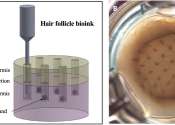More than meows: How bacteria help cats communicate
Many mammals, from domestic cats and dogs to giant pandas, use scent to communicate with each other. A new study from the University of California, Davis shows how domestic cats send signals to each other using odors derived ...









